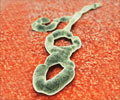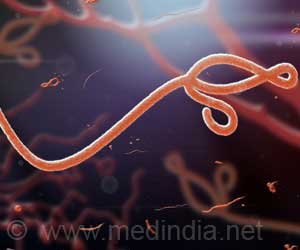Highlights
- Ebola virus disease, also known as Ebola hemorrhagic fever, is a disease caused by a virus.
- An newly developed Ebola virus disease (EVD) vaccine increases antibodies 6 months after immunization.
- The vaccine contains vesicular stomatitis virus which was well-tolerated with no safety concerns.
Clinical Trial For Ebola Vaccine
The trial involved 40 healthy people aged 18 to 65 years and looked at safety of the vaccine and the lowest dose required for an immune response after injection with one of 3 doses.
At a ratio of 3:1, thirty participants received the vaccine and 10 received placebo injections. The researchers found that adverse events were mild to moderate, with only 3 severe reactions, including headache, diarrhea and fatigue, which completely resolved.
"The results of this trial were positive and very promising; all 3 dose levels of the VSV [vesicular stomatitis virus] Ebola vaccine were well-tolerated by participants, and no safety concerns were identified," says Dr. May ElSherif.
Wild type VSV primarily infects animals (e.g., cattle and horses) and rarely infects humans. An upcoming study at 2 sites in Africa, as well as in Montréal and Ottawa in Canada, will test the safety and protection levels of the VSV-Ebola vaccine in HIV-infected adults and adolescents. A completed phase 3 trial showed that the vaccine is effective in preventing EVD in contacts of recently confirmed cases.
Other Tested Vaccines
- The vaccine, called rVSV-ZEBOV, was studied in a trial involving 11,841 people in Guinea in 2015. Around 5,837 people received the vaccine and no cases of Ebola were recorded 10 days or more after vaccination.
- Dengue and Ebola virus infections were inhibited by using a combination of two cancer drugs in mice. Erloitinib and sunitinib drugs which are approved by the Food and Drug Administration for the treatment of cancer was tested. About half of the mice which received the drug combination was found to survive.
- Chinese Ebola vaccine is the first based on the Ebola virus strain responsible for the West African outbreak in 2014. It is in the form of a freeze-dried powder which will keep it stable for at least two weeks in temperatures of up to 37°C. The vaccine was proved safe in humans.
- Author May S. ElSherif et al., Assessing the safety and immunogenicity of recombinant vesicular stomatitis virus Ebola vaccine in healthy adults: a randomized clinical trial, Canadian Medical Association Journal (2017) http://dx.doi.org/10.1503/cmaj.170074.
Source-Medindia













